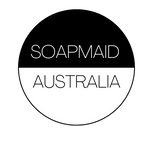
Caprylic/Capric Triglyceride (MCT Oil)
Caprylic/Capric Triglyceride – Natural Emollient for Skincare & Cosmetics in Australia
Caprylic/Capric Triglyceride (MCT Oil) – Lightweight Emollient for Natural Skincare
Caprylic/Capric Triglyceride, also known as MCT Oil, is a premium, plant-derived ingredient widely used in natural and clean beauty formulations. Extracted from coconut oil or palm kernel oil, this clear, odourless liquid functions as a natural alternative to synthetic emollients like silicones and mineral oils.
What is Caprylic/Capric Triglyceride?
Caprylic/Capric Triglyceride is composed of medium-chain fatty acids (C8 and C10), offering excellent emollient and skin-conditioning properties. It provides a lightweight, silky texture that enhances the performance and feel of a wide range of cosmetic products.
Benefits in Skincare and Cosmetics
-
Improves spreadability and glide in formulations
-
Provides a non-greasy, smooth finish
-
Enhances skin hydration without clogging pores
-
Acts as a natural solubilizer for essential oils and actives
-
Helps extend shelf life due to high oxidative stability
-
Ideal for sensitive, oily, and acne-prone skin
-
Non-comedogenic, non-irritating, and safe for daily use
Applications & Usage Guidelines for Australian Formulations
Caprylic/capric triglyceride performs flawlessly across our diverse climates, from tropical humidity to desert dryness.
Skincare Formulation Guidelines
- Facial Serums: 30-50% as carrier for active ingredients
- Moisturisers: 5-15% for lightweight emolliency
- Sunscreen: 10-20% as non-greasy SPF dispersant
- Anti-Aging Creams: 20-30% for retinol and peptide delivery
Hair Care Applications
- Leave-In Conditioner: 50-70% base with lightweight silicones
- Scalp Serum: 40% carrier for essential oils and peptides
- Heat Protectant: 60% with antioxidants for thermal barrier
- Colour Deposit Treatment: 30% to seal cuticle and preserve vibrancy
Makeup & Colour Cosmetics
- Lip Products: 20-40% for smooth, non-sticky texture
- Foundation/Base: 5-10% for spreadability and adhesion
- Eyeshadow Primer: 15% for long-wear and crease resistance
- Mascara: 5% for brush glide and lash separation
Why Choose Caprylic/Capric Triglyceride for Formulation
Whether you're a professional formulator, indie brand, or DIY skincare maker, MCT oil delivers luxury texture, formulation stability, and skin-friendly performance. Its ability to dissolve actives and improve product texture makes it a hero ingredient in clean beauty, natural skincare, and vegan cosmetics.
Caprylic/Capric Triglyceride vs. Other Emollients Comparison
| Emollient | Molecular Weight | Absorption Speed | Comedogenic Rating | Stability | Australian Climate |
|---|---|---|---|---|---|
| Caprylic/Capric Triglyceride | 400-500 Da | ⭐⭐⭐⭐⭐ (Rapid) | 1 (Very low) | ⭐⭐⭐⭐⭐ (Excellent) | ⭐⭐⭐⭐⭐ (Perfect) |
| Mineral Oil | 300-500 Da | ⭐⭐ (Slow) | 0-2 (Low) | ⭐⭐⭐⭐ (Good) | ⭐⭐⭐ (Heavy) |
| Jojoba Oil | 800-1000 Da | ⭐⭐⭐⭐ (Fast) | 2 (Low) | ⭐⭐⭐⭐⭐ (Excellent) | ⭐⭐⭐⭐ (Good) |
| Fractionated Coconut | 400-600 Da | ⭐⭐⭐⭐ (Fast) | 1 (Very low) | ⭐⭐⭐⭐ (Good) | ⭐⭐⭐⭐ (Good) |
Frequently Asked Questions (FAQ) about Caprylic/Capric Triglyceride
What makes caprylic/capric triglyceride different from coconut oil?
Caprylic/capric triglyceride is a fractionated, purified version of coconut oil containing only medium-chain fatty acids (C8-C10). This removes heavier components that feel greasy, creating a lightweight, fast-absorbing emollient perfect for facial products and Australian summers.
Is caprylic/capric triglyceride comedogenic?
No! With a comedogenic rating of 1, caprylic/capric triglyceride is suitable for all skin types including acne-prone and oily. Its medium-chain structure penetrates quickly without clogging pores or leaving residue.
What's the ideal usage rate for skincare formulations?
5-15% in creams and lotions for lightweight emolliency, 30-50% in serums and facial oils as primary carrier, and 1-5% in makeup for spreadability. Adjust based on desired texture and active delivery requirements.
Can caprylic/capric triglyceride replace silicones in formulations?
Yes! It provides similar slip and spreadability without the environmental concerns of silicones. Use at 2-3x the silicone percentage for comparable sensory feel while maintaining formulation stability.
Is caprylic/capric triglyceride suitable for sensitive skin?
Absolutely! It's hypoallergenic, non-irritating, and fragrance-free, making it ideal for sensitive skin, baby products, and post-procedure skincare. The purified nature eliminates potential irritants found in whole oils.
What's the shelf life of caprylic/capric triglyceride?
2-3 years when stored properly, with excellent oxidation stability due to saturated fatty acid composition. In Australia's warm climate, amber packaging and cool storage maintain integrity for maximum formulation shelf life.
